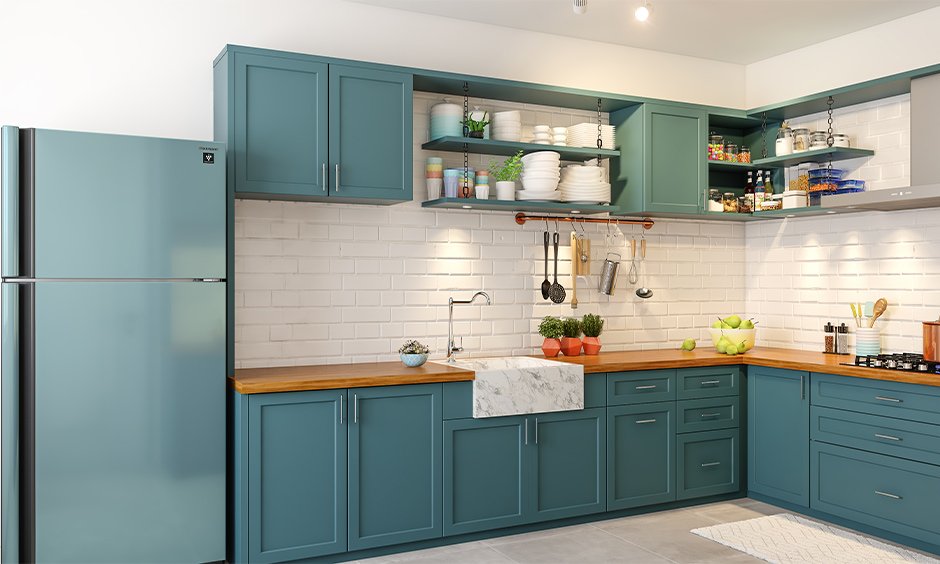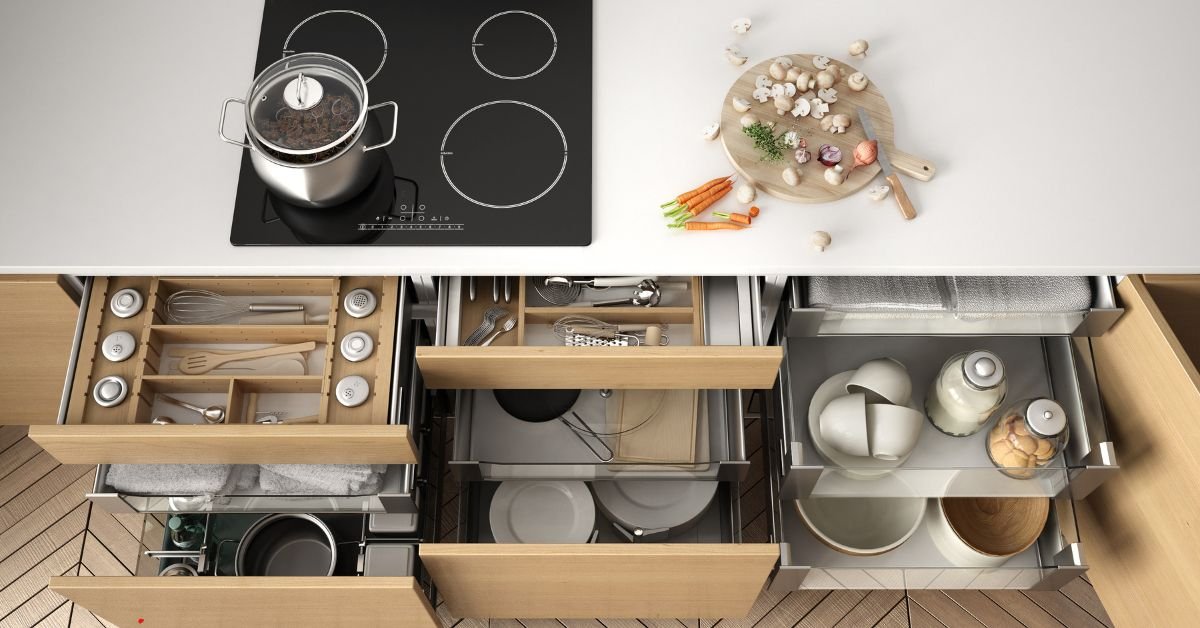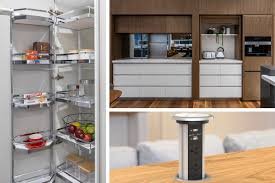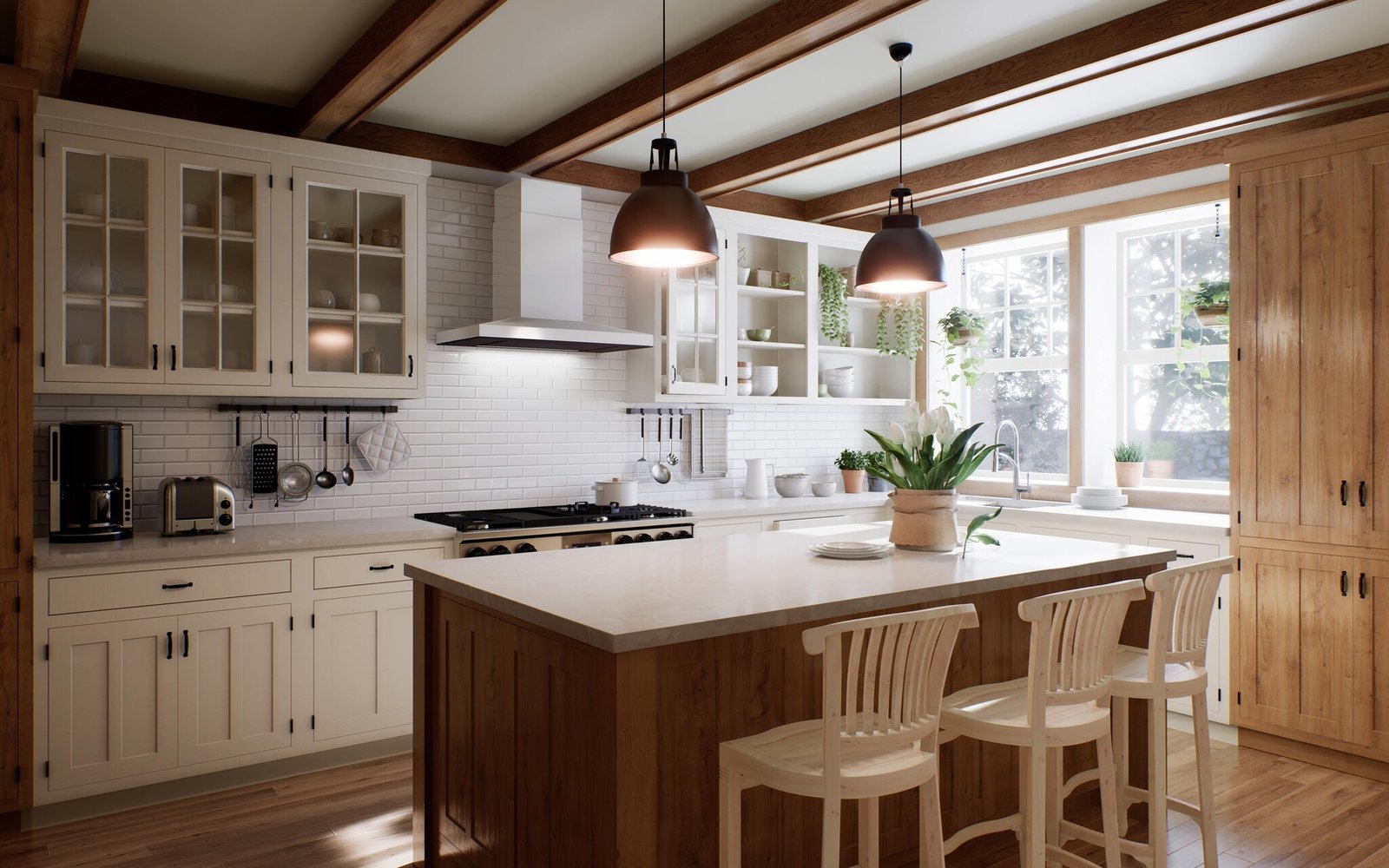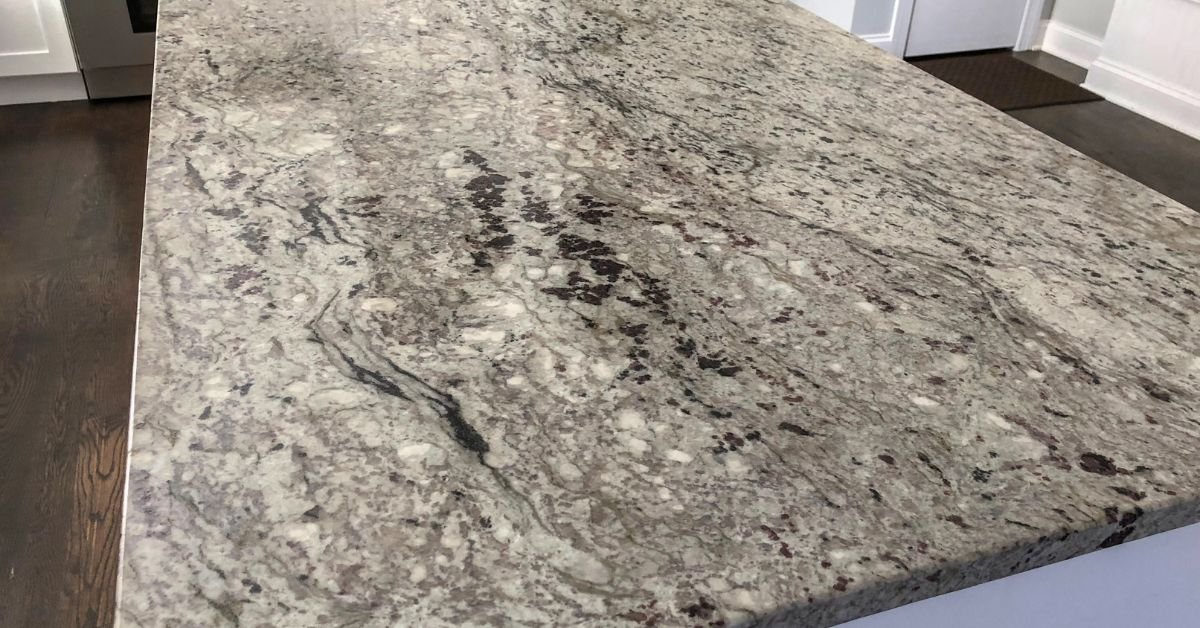How to Upgrade an Old Kitchen with Smart Technology
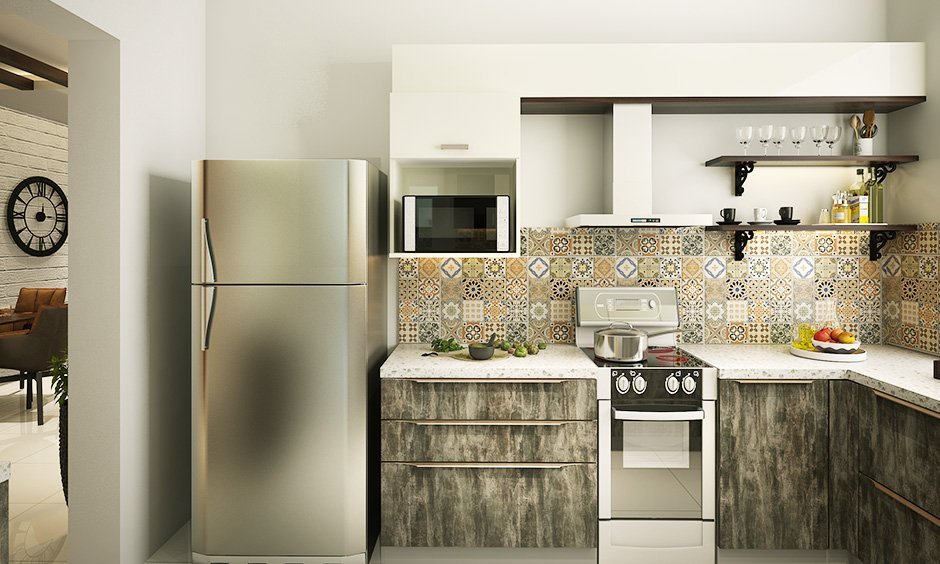
Upgrading an old kitchen with smart technology can transform your cooking space into a modern, efficient, and convenient hub. Smart technology offers numerous benefits, including energy efficiency, enhanced safety, and increased convenience through automation and remote control.
This comprehensive guide will walk you through the process of upgrading your kitchen, from assessing your current setup and selecting the right smart appliances to integrating a cohesive smart home ecosystem. Let’s explore the steps to bring your kitchen into the 21st century with smart technology.
The kitchen is often considered the heart of the home, and upgrading it with smart technology can significantly enhance your daily living experience. Smart kitchens offer a blend of functionality and convenience, allowing you to manage cooking, cleaning, and even grocery shopping with greater ease.
Whether you’re looking to replace outdated appliances, improve energy efficiency, or simply add a touch of modern convenience, integrating smart technology can make a big difference.
How to Upgrade an Old Kitchen with Smart Technology
In this guide, we will cover the essential steps and considerations for upgrading an old kitchen with smart technology.
From assessing your current kitchen setup to choosing the right smart appliances and gadgets, we’ll provide practical advice and tips to help you navigate the transformation process smoothly.
Assessing the Current Kitchen Setup

Before diving into the world of smart technology, it’s crucial to assess your current kitchen setup. This evaluation will help you identify key areas for improvement and prioritize your upgrade efforts.
Identifying Key Areas for Improvement:
- Outdated Appliances and Fixtures: Start by taking inventory of your existing kitchen appliances and fixtures. Identify which items are outdated, inefficient, or lack modern features. Common candidates for replacement include old ovens, refrigerators, microwaves, and dishwashers.
- Inefficient Use of Space and Layout: Consider the layout and organization of your kitchen. Are there areas where space is wasted or underutilized? Assess how smart technology could optimize your kitchen’s layout and make better use of available space.
Determining Budget and Priorities:
- Establishing a Budget for the Upgrade: Set a realistic budget for your kitchen upgrade. Smart appliances can vary widely in price, so it’s important to allocate funds accordingly. Consider the long-term benefits and potential energy savings that smart technology can provide.
- Prioritizing Areas for Smart Technology Integration: Decide which areas of your kitchen are the highest priority for smart technology integration. This decision will depend on your specific needs and preferences. For example, if you enjoy cooking, you might prioritize smart cooking appliances, while those focused on sustainability might prioritize energy-efficient smart devices.
Choosing the Right Smart Appliances and Gadgets
Selecting the right smart appliances and gadgets is a critical step in upgrading your kitchen. The options are vast, so it’s important to choose devices that fit your needs, budget, and overall kitchen design.
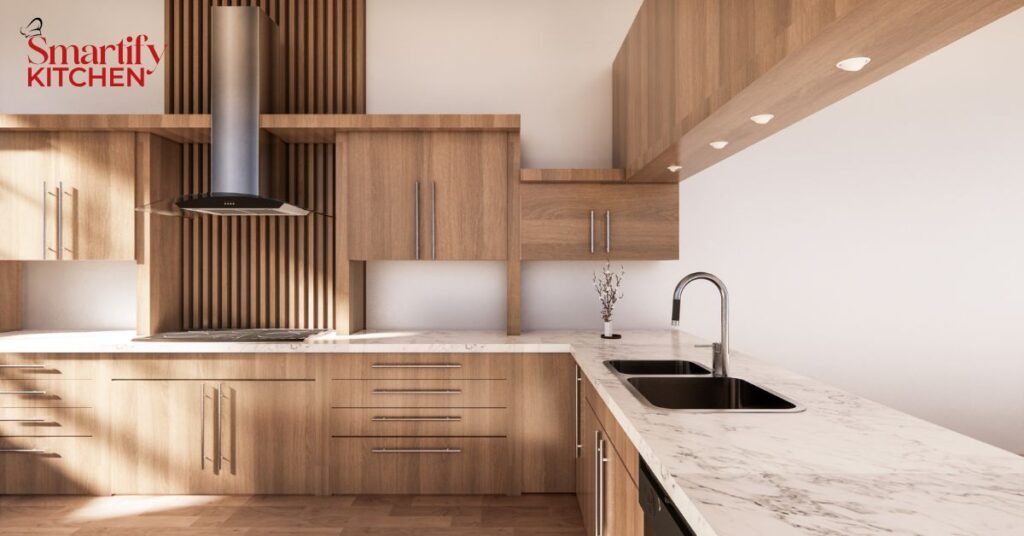
Smart Cooking Appliances:
- Smart Ovens, Cooktops, and Microwaves: Modern smart ovens offer features like Wi-Fi connectivity, voice control, and app-based recipes. These appliances can be remotely controlled and monitored, allowing you to start preheating the oven or adjust cooking settings from your smartphone. Smart cooktops may include induction technology, which offers precise temperature control and safety features.
- Smart Slow Cookers and Pressure Cookers: These multi-functional appliances are perfect for busy households. They offer programmable settings, allowing you to schedule meals in advance. Some models can be controlled remotely, so you can start cooking dinner while you’re at work or running errands.
Smart Refrigeration and Storage:
- Smart Refrigerators and Freezers: Smart refrigerators come equipped with features like cameras, touchscreens, and inventory management. They can track the contents of your fridge, suggest recipes based on available ingredients, and even create shopping lists. Some models can also send alerts if the door is left open or if the temperature changes unexpectedly.
- Smart Storage Solutions and Pantry Organization: Consider smart storage solutions that help you keep your pantry and kitchen organized. For instance, smart containers can track expiration dates and send reminders to use items before they go bad.
Smart Dishwashing and Cleaning:
- Smart Dishwashers: Smart dishwashers offer features like remote monitoring, customizable wash cycles, and diagnostic alerts. They can notify you when a cycle is complete or if maintenance is needed. Some models even have energy-saving modes that adjust water and energy usage based on load size.
- Robotic Vacuums and Floor Cleaners: Keep your kitchen floors clean with robotic vacuums and floor cleaners. These devices can be scheduled to clean at specific times and can be controlled via smartphone apps.
Smart Small Appliances and Gadgets:
- Smart Coffee Makers, Blenders, and Kitchen Scales: Upgrade your small appliances with smart options. Smart coffee makers can be programmed to brew coffee at specific times, smart blenders can follow app-based recipes, and smart kitchen scales can provide precise measurements and nutritional information.
- Smart Plugs and Power Strips: Use smart plugs and power strips to make existing appliances smarter. These devices allow you to control power to any connected appliance remotely, schedule on/off times, and monitor energy usage.
Enhancing Kitchen Lighting and Ambiance
Lighting plays a crucial role in the functionality and ambience of your kitchen. Smart lighting solutions offer flexibility and convenience, allowing you to customize the lighting experience.

Smart Lighting Solutions:
- Smart LED Bulbs and Light Strips: Replace traditional bulbs with smart LED bulbs, which can change color, adjust brightness, and be controlled remotely. Smart light strips can be installed under cabinets or along countertops for additional task lighting and ambiance.
- Smart Switches and Dimmers: Upgrade your existing light switches with smart switches and dimmers. These devices allow you to control lights remotely, set schedules, and create lighting scenes for different activities.
Voice and App Control for Lighting:
- Integrating Lighting with Voice Assistants: Pair your smart lighting with voice assistants like Amazon Alexa, Google Assistant, or Apple Siri. This integration allows you to control lights using voice commands, making it easy to adjust lighting without interrupting your cooking.
- Creating Lighting Scenes and Schedules: Use smart lighting apps to create custom lighting scenes and schedules. For example, you can set up a “cooking” scene with bright task lighting and a “dinner” scene with softer, ambient lighting.
Upgrading Kitchen Utilities and Safety Features
In addition to appliances and lighting, consider upgrading your kitchen’s utilities and safety features with smart technology.
Smart Faucets and Water Systems:
- Touchless and Voice-Activated Faucets: Smart faucets offer touchless operation, which is convenient and hygienic. Some models can be controlled with voice commands, allowing you to adjust water temperature and flow without touching the faucet.
- Smart Water Filters and Leak Detectors: Install smart water filters that monitor water quality and notify you when it’s time to replace the filter. Smart leak detectors can alert you to leaks or water damage, helping to prevent costly repairs.
Smart Thermostats and Ventilation:
- Smart Thermostats for Temperature Control: A smart thermostat can regulate the temperature in your kitchen, ensuring comfort while you cook. It can also help save energy by adjusting heating and cooling based on your schedule.
- Smart Range Hoods and Air Purifiers: Smart range hoods can automatically adjust ventilation based on cooking activity, while smart air purifiers can monitor and improve air quality in your kitchen.
Safety and Security Enhancements:
- Smart Smoke and Carbon Monoxide Detectors: Upgrade your kitchen’s safety with smart smoke and carbon monoxide detectors. These devices can send alerts to your smartphone and integrate with other smart home systems for enhanced safety.
- Smart Locks and Security Cameras: Consider installing smart locks on kitchen doors and windows, and security cameras for monitoring. These devices can provide peace of mind and enhance the security of your home.
Integrating Smart Home Ecosystems
To fully leverage smart technology in your kitchen, consider integrating your devices into a cohesive smart home ecosystem.
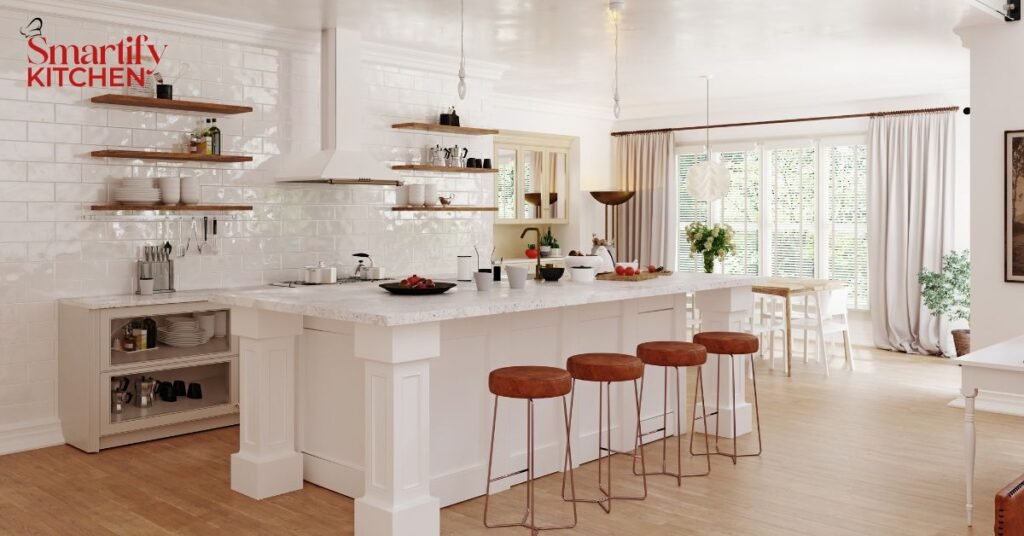
Choosing a Smart Home Hub or Assistant:
- Comparison of Popular Smart Home Hubs: Choose a smart home hub or assistant that best suits your needs. Popular options include Amazon Alexa, Google Assistant, and Apple HomeKit. Each offers unique features and compatibility with different smart devices.
Connecting and Automating Devices:
- Setting Up and Syncing Smart Devices: Use your chosen smart home hub to connect and sync all your smart kitchen devices. This setup allows for seamless control and automation.
- Creating Automation Routines and Scenes: Automate your kitchen experience by creating routines and scenes. For example, set up a morning routine that turns on lights, brews coffee, and starts playing your favorite news podcast.
Practical Considerations and Challenges
While upgrading to a smart kitchen offers many benefits, there are practical considerations and challenges to keep in mind.
Wiring and Power Supply Needs:
- Upgrading Electrical Systems: Ensure your kitchen’s electrical system can handle the additional load from smart appliances. You may need to upgrade wiring or add more outlets to accommodate new devices.
Network and Connectivity Requirements:
- Ensuring Robust Wi-Fi Coverage: Smart devices require a reliable Wi-Fi connection. Ensure your kitchen has strong Wi-Fi coverage, and consider adding a Wi-Fi extender if needed.
- Network Security: Protect your smart devices from potential cyber threats by setting strong passwords and enabling security features like two-factor authentication.
Compatibility and Interoperability:
- Ensuring Devices Work Together: Check that your chosen smart devices are compatible with each other and your smart home hub. This compatibility ensures smooth operation and integration.
Final Touches and Aesthetic Enhancements
Once the functional upgrades are in place, consider how to blend smart technology with your kitchen’s design and aesthetics.
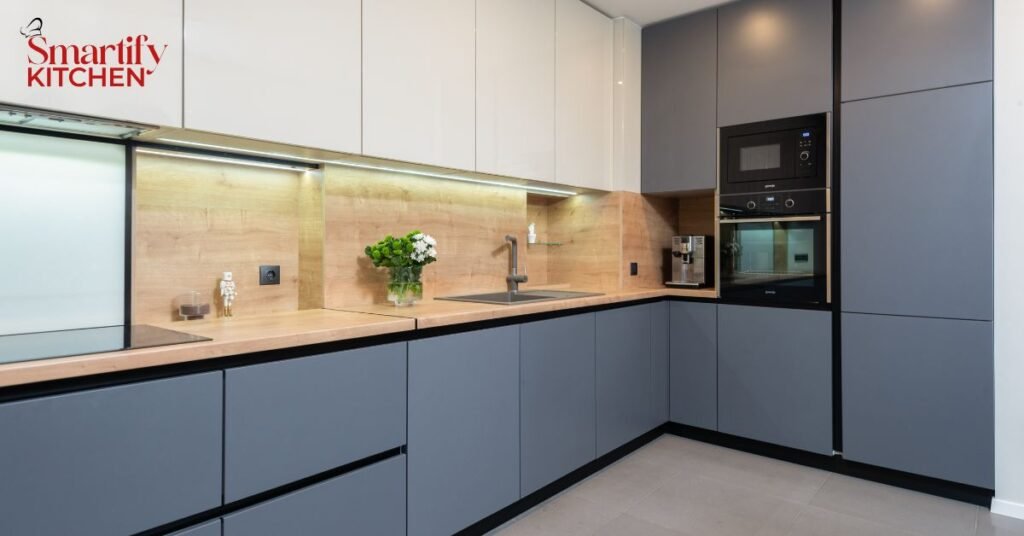
Blending Smart Technology with Kitchen Design:
- Integrating Smart Devices into the Aesthetic: Choose smart devices with finishes and designs that complement your kitchen’s style. For example, stainless steel appliances can match a modern kitchen, while matte black devices may suit a more contemporary space.
- Choosing Finishes and Materials: When selecting smart devices, consider the finishes and materials used. Opt for high-quality, durable options that align with your kitchen’s overall look.
Customizing the User Experience:
- Personalizing Settings and Preferences: Take the time to customize the settings and preferences of your smart devices. Tailor automation routines, lighting scenes, and device behavior to suit your lifestyle and needs.
Conclusion
Upgrading an old kitchen with smart technology can greatly enhance functionality, convenience, and efficiency. By carefully selecting smart appliances, integrating them into a cohesive smart home ecosystem, and addressing practical considerations, you can create a modern kitchen that suits your needs and style.
Whether you’re looking to simplify your cooking routine, improve energy efficiency, or enhance kitchen safety, smart technology offers solutions that make everyday life easier and more enjoyable.
Embrace the future of cooking and home management by transforming your kitchen with smart technology.

